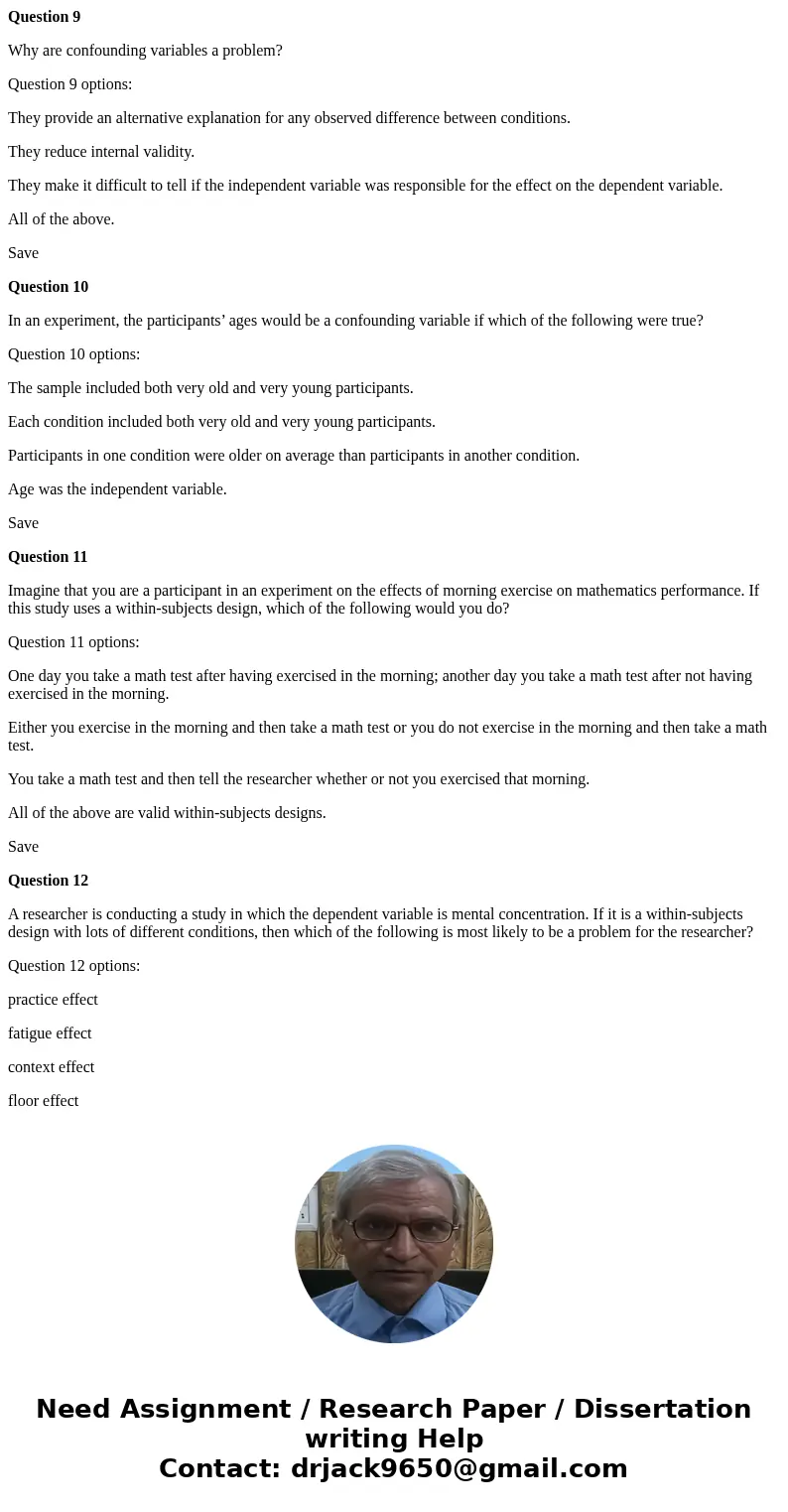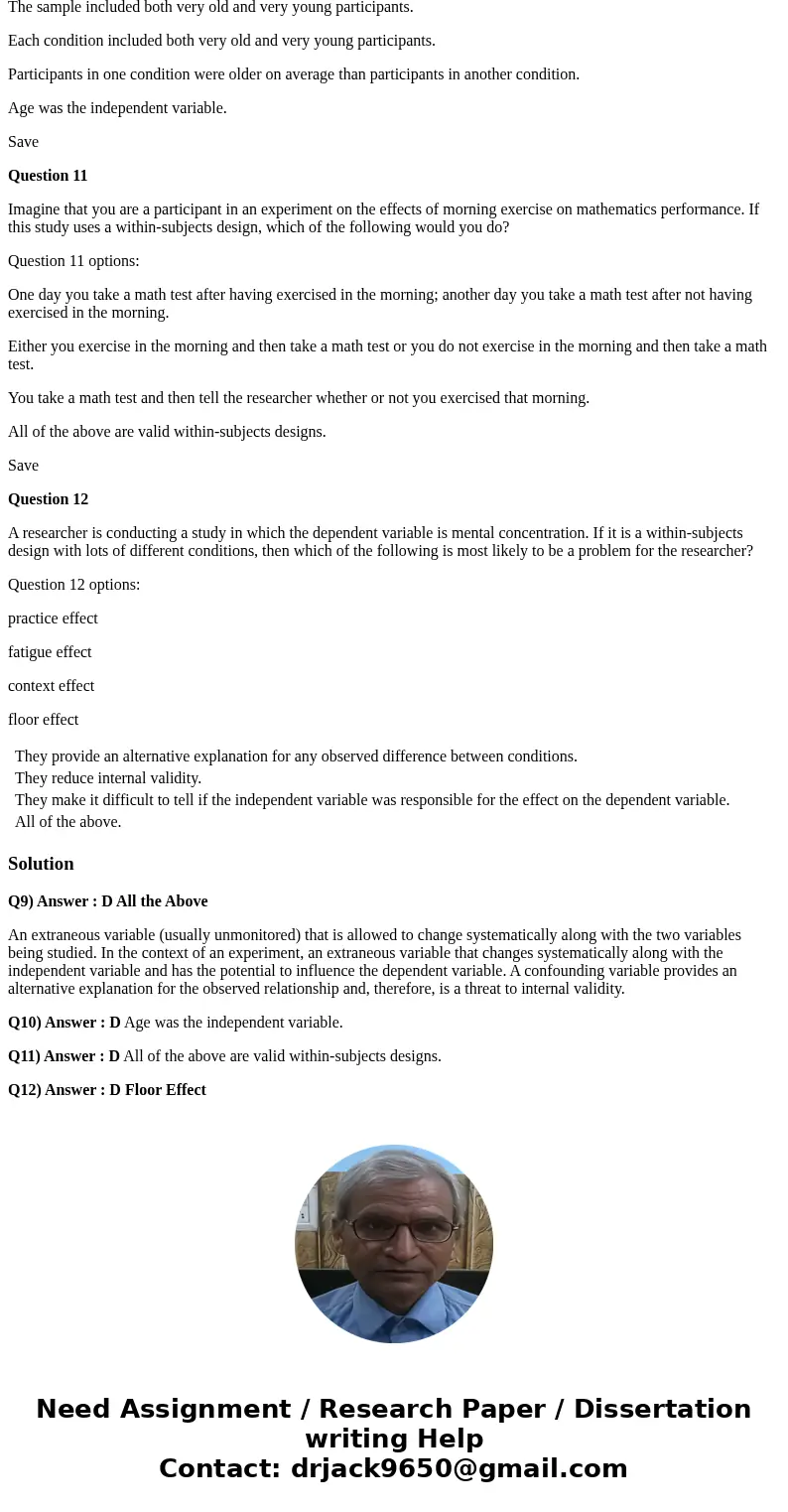Question 9 Why are confounding variables a problem Question
Question 9
Why are confounding variables a problem?
Question 9 options:
They provide an alternative explanation for any observed difference between conditions.
They reduce internal validity.
They make it difficult to tell if the independent variable was responsible for the effect on the dependent variable.
All of the above.
Save
Question 10
In an experiment, the participants’ ages would be a confounding variable if which of the following were true?
Question 10 options:
The sample included both very old and very young participants.
Each condition included both very old and very young participants.
Participants in one condition were older on average than participants in another condition.
Age was the independent variable.
Save
Question 11
Imagine that you are a participant in an experiment on the effects of morning exercise on mathematics performance. If this study uses a within-subjects design, which of the following would you do?
Question 11 options:
One day you take a math test after having exercised in the morning; another day you take a math test after not having exercised in the morning.
Either you exercise in the morning and then take a math test or you do not exercise in the morning and then take a math test.
You take a math test and then tell the researcher whether or not you exercised that morning.
All of the above are valid within-subjects designs.
Save
Question 12
A researcher is conducting a study in which the dependent variable is mental concentration. If it is a within-subjects design with lots of different conditions, then which of the following is most likely to be a problem for the researcher?
Question 12 options:
practice effect
fatigue effect
context effect
floor effect
| They provide an alternative explanation for any observed difference between conditions. | |
| They reduce internal validity. | |
| They make it difficult to tell if the independent variable was responsible for the effect on the dependent variable. | |
| All of the above. |
Solution
Q9) Answer : D All the Above
An extraneous variable (usually unmonitored) that is allowed to change systematically along with the two variables being studied. In the context of an experiment, an extraneous variable that changes systematically along with the independent variable and has the potential to influence the dependent variable. A confounding variable provides an alternative explanation for the observed relationship and, therefore, is a threat to internal validity.
Q10) Answer : D Age was the independent variable.
Q11) Answer : D All of the above are valid within-subjects designs.
Q12) Answer : D Floor Effect


 Homework Sourse
Homework Sourse